China vis-à-vis India: Defence issues
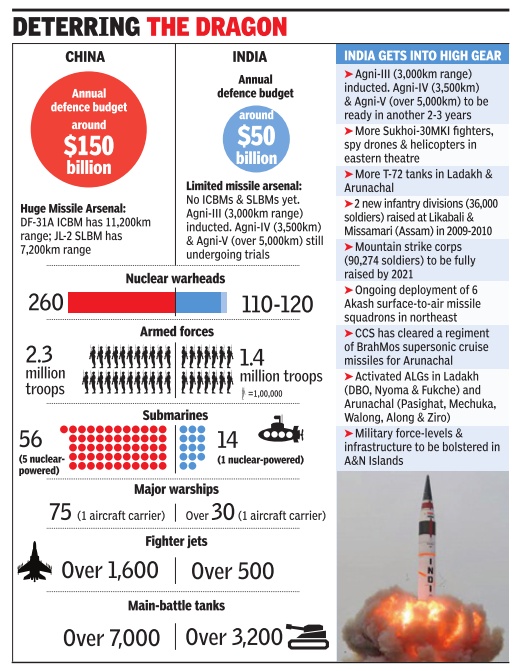
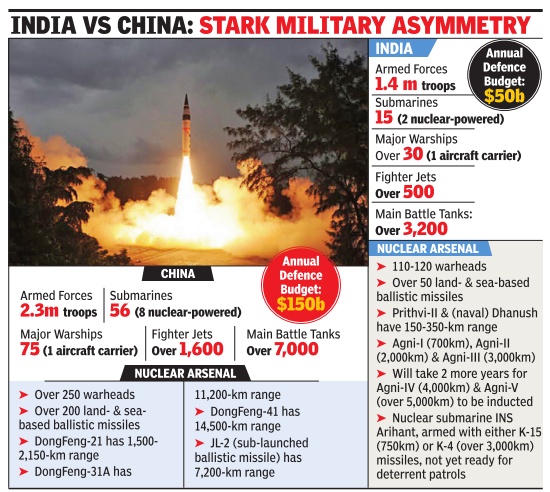
This is a collection of articles archived for the excellence of their content. |
Contents |
Defence capabilities
2017: China vis-à-vis India

See graphic:
Main equipment deployed and spending and defence budget, China and India
2018: China vis-à-vis India
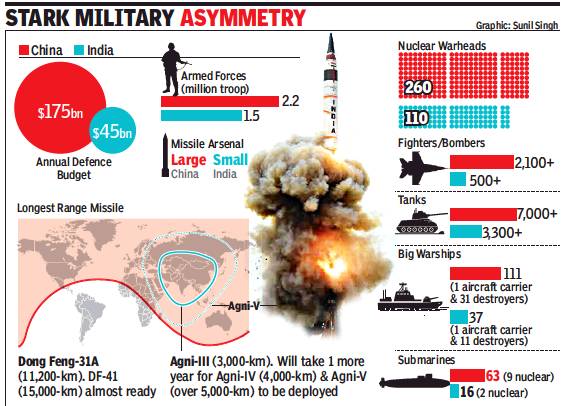
From: Rajat Pandit, Forget ’62, India now better poised to deter the Dragon, April 24, 2018: The Times of India
The swift dragon can be held to a stalemate, even though it may be able to inflict some damage by breathing fire. India is militarily no longer the pushover it was during the 1962 war despite persisting critical operational and infrastructure gaps as well as the ever-expanding military asymmetry with China.
This is the assessment of top Indian military commanders, who contend they are being realistic, even as PM Narendra Modi heads to China later this week to reset ties and cool down tempers with the neighbour.
“India does not want war. But if the push comes to shove, we are prepared. China has been forced to grudgingly accept that India is no pushover after repeatedly testing our resolve over the last few years, especially during the Doklam troop face-off,” a senior official said.
Some may dub this gungho approach foolhardy, given the People’s Liberation Army’s overwhelming superiority in terms of sheer military power. Apart from a huge nuclear missile arsenal that dwarfs India’s, China is also leagues ahead in conventional military power, be it submarines and fighters or tanks and artillery. China also adroitly combines this “hard power” with “smart power” in terms of cyber warfare and other disruptive capabilities.
But a walkover like 1962, it will not be. With Chinese military capabilities mainly geared toward preventing interventions by the US and others in the Taiwan Strait and South China Sea, it all comes down to what the PLA can “actually throw” at India along the 4,057-km Line of Actual Control stretching from Ladakh to Arunachal Pradesh.
“The terrain does not give the PLA adequate space for manoeuverability. And we have the capability to counterattack,” a senior Army officer said. India has 15 infantry divisions (each with over 12,000 soldiers) tasked for its borders with China, apart from several artillery, missile, tank and air defence regiments.
Moreover, the new 17 Mountain Strike Corps, with a total of 90,274 soldiers for “swift ground offensive capabilities,” will be fully raised by 2021-2022. “PLA would require a combat ratio of at least 6:1 for mountain warfare along the LAC,” he added.
In the maritime domain, Indian warships can easily choke China’s sea lanes for its energy imports. “The PLA Navy may be much larger but in terms of operational expertise and experience in the Indian Ocean, they are behind,” a senior naval officer said.
Thoug China has 14 major airfields, advanced landing grounds and helipads on the Tibet Plateau, IAF can conceivably outgun its adversary. For one, the weapon and fuel-carrying capacity of Chinese fighters is limited by the 9,000- to 10,000-feet altitude of their airbases.
The overall aim is to build credible strategic deterrence to dissuade China from embarking on misadventures. India is slowly but steadily getting there.
Defence issues
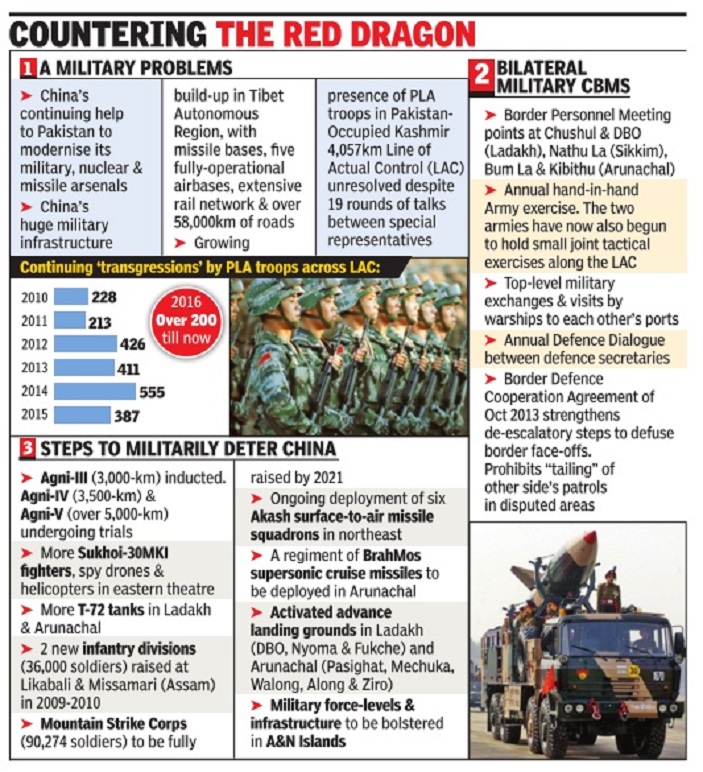
ii) Transgressions by the Chinese army into Indian territory, across the LAC, from 2010 to Sept. 2016.
The Times of India
See graphic:
China- India military issues, 2016
ii) Transgressions by the Chinese army into Indian territory, across the LAC, from 2010 to Sept. 2016.
Expenditure
As in 2018
Rajat Pandit, April 30, 2019: The Times of India
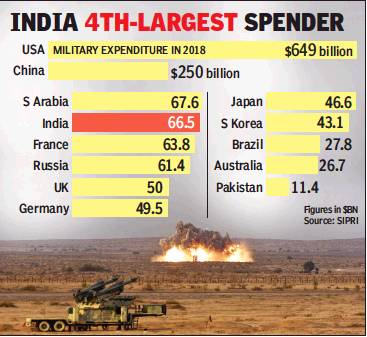
From: Rajat Pandit, April 30, 2019: The Times of India
China spends 4 times more than India on defence: Sipri
India Spends Just 25% Of Its Total Budget On Modernisation
New Delhi:
China’s military expenditure is almost four times that of India, with the latter’s armed forces also getting hobbled by a ballooning revenue expenditure and pension bill. The US, of course, is the world’s largest spender on defence, with a military expenditure almost equal to the next eight countries combined.
Latest data released by global think-tank Stockholm International Peace Research Institute (Sipri) shows that the total world military expenditure rose by 2.6% to $1,822 billion in 2018. “The five biggest spenders in 2018 were the United States ($649 billion), China ($250 billion), Saudi Arabia ($67.6 billion), India ($66.5 billion) and France ($63.8 billion), which together accounted for 60% of the global military spending,” it said.
Though Sipri doesn’t go into details, the $66.5 billion (Rs 4.6 lakh crore) military expenditure figure for India includes defence pensions, which amount to one-fourth of the total. Of the remaining, two-thirds go in for day-to-day running costs, salaries and the like for maintaining the almost 15-lakh strong armed forces.
Overall, this leaves just about one-fourth of the $66.5 billion figure for military modernisation and new weapon systems. So, despite India being the world’s fourth largest spender by displacing even Russia ($61.4 billion), its armed forces continue to suffer from critical shortages on several fronts.
China, which has hiked the defence budget for a 24th consecutive year, of course, wants to rival US on the global stage and prevent its military intervention in the Taiwan Strait and South China Sea.